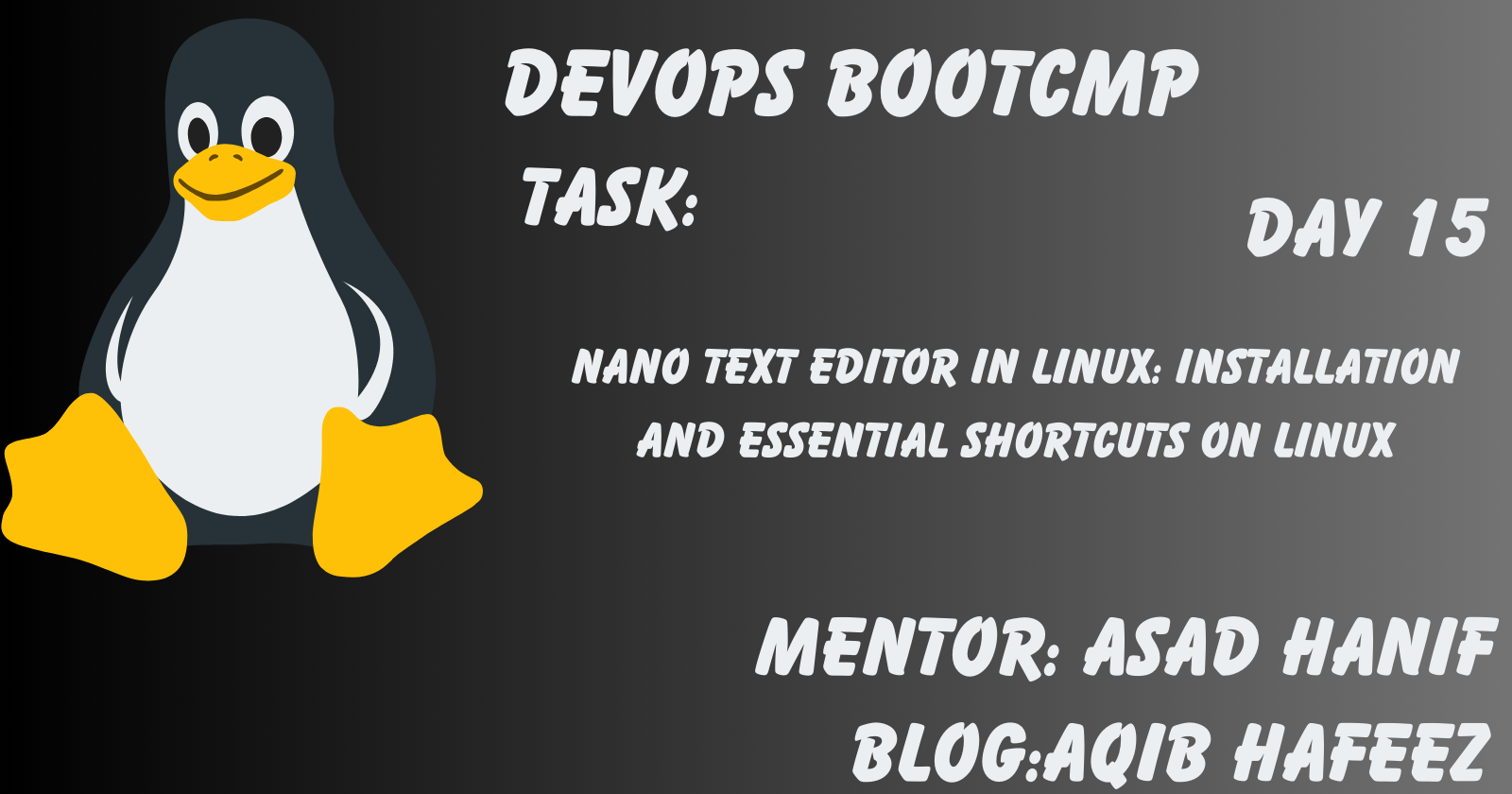Day 15 || Introduction to Nano Text Editor in Linux, Its Role in DevOps, Installation on Ubuntu, CentOS, and RHEL, and Essential Shortcut Keys
 AQIB HAFEEZ
AQIB HAFEEZ
Nano Text Editor in Linux:
Nano is a simple, command-line text editor commonly used in Linux and Unix-like operating systems. It's designed to be user-friendly and straightforward, making it accessible to both beginners and experienced users. Nano is often used in DevOps and system administration tasks because it's easy to use for quick text edits and configuration file adjustments.
Why we used Nano Text Editor in DevOps:
Script Editing: In DevOps, scripting is a common practice for automation. Nano provides a convenient platform for editing and maintaining scripts used in various DevOps workflows.
Ease of Use: Nano has an intuitive and straightforward interface, making it accessible for DevOps professionals who may need to make quick edits in configuration files, scripts, or documentation.
Available in Most Distributions: Nano is included by default or can be easily installed in most Linux distributions, making it a readily available tool.
Low Learning Curve: Unlike more complex text editors like Vim or Emacs, Nano doesn't require extensive learning and memorization of keyboard shortcuts.
How to Install Nano Text Editor
Ubuntu:
On Ubuntu-based systems, Nano is often preinstalled. However, if it's not, you can install it using the following command:
sudo apt-get install nanoCentOS/RHEL:
On CentOS and Red Hat-based systems, you can install Nano using the following command:
sudo yum install nanoOr, if you're using newer versions of CentOS/RHEL with
dnf, you can use:sudo dnf install nano
Nano Text Editor Shortcut Keys
Here are some common Nano shortcut keys to help you get started:
Ctrl+G: Display the help menu, which provides a list of available shortcuts.
Ctrl+O: Save the current file.
Ctrl+X: Exit Nano.
Ctrl+W: Search for text within the file.
Ctrl+K: Cut (delete) the current line.
Ctrl+U: Uncut (paste) the most recently cut text.
Ctrl+Y: Redo the most recent action.
Ctrl+C: Show the current cursor position (line and column).
Ctrl+Shift+6: Set the start of the text selection.
Alt+Shift+6: Copy the selected text.
Alt+Shift+U: Paste the copied text.
These shortcuts should help you perform common tasks in Nano. You can access the full list of shortcuts by pressing Ctrl+G within Nano, which opens the help menu.
Subscribe to my newsletter
Read articles from AQIB HAFEEZ directly inside your inbox. Subscribe to the newsletter, and don't miss out.
Written by

AQIB HAFEEZ
AQIB HAFEEZ
DevOps Engineer, Linux, Git, GitHub, GitLab, CI/CD pipelines, Jenkins, Docker, Kubernetes, Ansible & AWS. Practical experience in these DevOps tools enhances my passion for streamlined workflows, automated processes, and holistic development solutions. Proficient in digital and Facebook marketing, aiming to merge technical acumen with marketing finesse.